Zanzibar – the very name brings to mind the salty sea breezes, electric blue waters teeming with shoals of luminous fish and palm-fringed crystal-white sands. To honey-mooners and backpackers alike, it’s a land of coral beaches and barefoot luxury, lagoon-like seas dotted with dhows, and ancient towns steeped in history.
Here you can swim, snorkel in turquoise waters while shoals of rainbow-colored fish float by and pods of dolphins frolic offshore, or just lounge the hours away. But, long before the infinity pool was invented, it was ivory, tortoiseshell and – most significantly – spices that enticed foreigners to these parts.
Since ancient times, a flourishing sea-faring trade existed between the nations surrounding the Indian Ocean. Zanzibar island was the entry point to East Africa from the Indian Ocean. As a gateway to the region, these barely-touched shores brought together migrants, traders, conquerors and also victims of slave trades. Africans, Arabs, Indians, Persians, Portuguese, Dutch, and English met and mingled here and left behind a hybrid civilization, with Islam at its core and Kiswahili as its tongue.
This eclectic blend of cultures and surreal natural wonders makes this remarkable island the best beach safari spot to end your East African overland tour. If you’re not sure yet, perhaps these five must-do activities will help to convince you.
1. Take a tour of the Spice Route
This island’s spice heritage harks back more than four centuries ago when Portuguese traders established a base on Zanzibar as part of their plan to control East Africa. But, although it was the Portuguese who imported various plants from their colonies in South America and India, it was the Omani Arabs, who cultivated the plantations and turned Zanzibar into a spice-producing mecca.
Sultan Seyyid Said, the first Omani sultan to govern Zanzibar island, issued a decree to other landowners that for each coconut tree on their farms, two clove trees must be planted. Soon Zanzibar had become a major producer of spices. And with the demise of the slave trade in the late nineteenth century, spices became Zanzibar’s main source of income.
Today, a tour of Zanzibar’s spice route is considered a mandatory addition to your itinerary. The legendary spice plantations of Zanzibar island are intertwined in the region’s history and culture. From the dark-red stain of henna on a bride’s hands to the coconut-palm roof of a newly-constructed house, or the sweet aroma of cloves drying in the sun.
Add to this, the remarkable and distinctive dishes by the likes of full-bodied curries made with the freshest seafood and mouth-watering fruits such as mangoes, lychees, bananas, jackfruit, and the notoriously smelly durian fruit.
Our Best Zanzibar Escapes
From From From From From From From From From From From From From From From From From From From From From From From From From From From From From From From From From From From From From From From From From From From From From From From From From From From From From From From From
Tour Length
34 days
Group Size
Max 16
Starts & Ends
Starts: Dar es Salaam Ends: Cape Town
Countries
Tanzania, Malawi, Zambia, Botswana, Namibia, South Africa
Overview
Powdery beaches backed by massive baobabs, the billowing sails of wooden dhows, electric blue waters teeming with rainbow clouds of tropical fish - this isn't a dream, it’s day one of your adventure and it only gets better from here. This paradise-inspired trip hits all the spots, taking you from the go-slow island vibe of Zanzibar to the slick cosmopolitan feel of Cape Town. Top it off with open-top safaris in Chobe and wilderness excursions in Okavango. Now, this is how you travel Africa.
34 day Zanzibar to Cape Town Adventure Tour (Camping)
Tour start → end dates
Price
Enquire
10 Dec 2024
→
12 Jan 2025
Check Availability
07 Jan 2025
→
09 Feb 2025
Check Availability
21 Jan 2025
→
23 Feb 2025
Check Availability
04 Feb 2025
→
09 Mar 2025
Check Availability
18 Feb 2025
→
23 Mar 2025
Check Availability
04 Mar 2025
→
06 Apr 2025
Check Availability
18 Mar 2025
→
20 Apr 2025
Check Availability
01 Apr 2025
→
04 May 2025
Check Availability
15 Apr 2025
→
18 May 2025
Check Availability
29 Apr 2025
→
01 Jun 2025
Check Availability
13 May 2025
→
15 Jun 2025
Check Availability
27 May 2025
→
29 Jun 2025
Check Availability
10 Jun 2025
→
13 Jul 2025
Check Availability
24 Jun 2025
→
27 Jul 2025
Check Availability
08 Jul 2025
→
10 Aug 2025
Check Availability
22 Jul 2025
→
24 Aug 2025
Check Availability
05 Aug 2025
→
07 Sep 2025
Check Availability
19 Aug 2025
→
21 Sep 2025
Check Availability
02 Sep 2025
→
05 Oct 2025
Check Availability
16 Sep 2025
→
19 Oct 2025
Check Availability
30 Sep 2025
→
02 Nov 2025
Check Availability
14 Oct 2025
→
16 Nov 2025
Check Availability
28 Oct 2025
→
30 Nov 2025
Check Availability
11 Nov 2025
→
14 Dec 2025
Check Availability
25 Nov 2025
→
28 Dec 2025
Check Availability
09 Dec 2025
→
11 Jan 2026
Check Availability
23 Dec 2025
→
25 Jan 2026
Check Availability
Tour Length
10 days
Group Size
Max 20
Starts & Ends
Starts: Nairobi Ends: Dar es Salaam
Countries
Tanzania,
Kenya
Overview
10 Day Highlights of Tanzania taking in great wildlife sightings in the Ngorongoro Crater, experience the incredible Zanzibar beaches and cultures along the way and end at the tropical coastline of Zanzibar.
10 Day Highlights of Tanzania (South) (Camping)
Tour start → end dates
Price
Enquire
24 Nov 2024
→
03 Dec 2024
Check Availability
08 Dec 2024
→
17 Dec 2024
Check Availability
22 Dec 2024
→
31 Dec 2024
Check Availability
05 Jan 2025
→
14 Jan 2025
Check Availability
19 Jan 2025
→
28 Jan 2025
Check Availability
02 Feb 2025
→
11 Feb 2025
Check Availability
16 Feb 2025
→
25 Feb 2025
Check Availability
02 Mar 2025
→
11 Mar 2025
Check Availability
16 Mar 2025
→
25 Mar 2025
Check Availability
30 Mar 2025
→
08 Apr 2025
Check Availability
13 Apr 2025
→
22 Apr 2025
Check Availability
27 Apr 2025
→
06 May 2025
Check Availability
11 May 2025
→
20 May 2025
Check Availability
25 May 2025
→
03 Jun 2025
Check Availability
08 Jun 2025
→
17 Jun 2025
Check Availability
22 Jun 2025
→
01 Jul 2025
Check Availability
06 Jul 2025
→
15 Jul 2025
Check Availability
20 Jul 2025
→
29 Jul 2025
Check Availability
03 Aug 2025
→
12 Aug 2025
Check Availability
17 Aug 2025
→
26 Aug 2025
Check Availability
31 Aug 2025
→
09 Sep 2025
Check Availability
14 Sep 2025
→
23 Sep 2025
Check Availability
28 Sep 2025
→
07 Oct 2025
Check Availability
12 Oct 2025
→
21 Oct 2025
Check Availability
26 Oct 2025
→
04 Nov 2025
Check Availability
09 Nov 2025
→
18 Nov 2025
Check Availability
23 Nov 2025
→
02 Dec 2025
Check Availability
07 Dec 2025
→
16 Dec 2025
Check Availability
21 Dec 2025
→
30 Dec 2025
Check Availability
2. Explore Kuza Cave
This is undoubtedly my favorite spot in Zanzibar. Whether you are in a group, on honey-moon or solo traveling on this magical island, Kuza Cave deserves to be on your bucket list. Situated just a stone’s throw away from the village of the Kibigija along the region’s east coast, these ancient caves are a sacred place to the forefathers of Jambiani residents.
This surreal limestone wonder was formed about 250,000 years ago by thousands of years of water erosion that created secret underground rivers and pools. The cave and its healing waters have long been a sacred space for the local people. For thousands of years, they’ve journeyed to this spot within the Earth’s underbelly to hold ceremonies and pray.
It’s still a place of religious worship and is closed to the public when ceremonies are in progress. But, when the cave is open, it offers unique experiences for people seeking authentic local interactions and an insight into the importance of sacred caves in both local histories and the broader story of our first ancestors from Tanzania. After a relaxing swimming session in the ancient waters and a dose of history, visitors can enjoy dance and drum lessons a chance to learn how to cook Swahili dishes.
https://www.instagram.com/p/BtOitounXnx/
3. Set your sights on The House of Wonders
Although visiting ancient war sites is not my personal favorite thing to do while traveling, the House of Wonders was one of the most mesmerizing places I’ve been to in Zanzibar. Situated in the center of Stone Town, the most historic part of Zanzibar City, this 19th-century palace was once part of the shortest war in history.
In its heyday this iconic building served to attest to the modernity of Sultan Barghash bin Said. It boasted marble floors, paneled walls, and never-before-seen electricity and running water – hence its name. The House of Wonders thrived up until 1896 when Khalid bin Barghash seized the throne after his cousin – the ruling Sultan at the time – passed away. This angered British forces in the area, who launched a naval bombardment of Stone Town for just 38 minutes in what’s known as the shortest war in world history.
After the war, this resilient building went from being the home of the sultan to a government office and the main secretariat for the British governing authorities. After the Zanzibar Revolution of 1964, it was converted into a school and then a museum for the ruling Afro-Shirazi Party with North Korean aid. By 1992 new development was initiated and today it serves as a museum and one of Stone Town’s major tourist attractions.
The museum displays a blend of Portuguese, English, Omani, and Swahili culture that can be found in Zanzibar. From traditional Swahili garments, David Livingstone’s medical chest, and carved wooden doors inscribed with phrases from the Quran – the House of Wonders proves that Zanzibar is more than just a sandy paradise.
https://www.instagram.com/p/BqqZDVcABfI/
4. Trek Jozani forest
Think “wildlife in Tanzania” and golden savannahs teaming with zebras and giraffes are sure to come to mind. But in Zanzibar, it’s a whole new world. Situated south of Chwaka Bay, Jozani Forest is a place of lush greenery, exotic leopards, mangrove swamps, ancient medicine cures, and mischievous red-faced monkeys.
While it may be small, only 50 km2 (19 sq mi), Zanzibar’s first and only National Park is definitely worth a visit. The swamp like environment of moisture-loving trees and ferns is home to an incredible array of animals, such as the Sykes monkey, bushbabies, more than 50 species of butterfly, and 40 species of birds.
Aside from the plethora of animals inhabiting the region, the forest is a natural pharmacy boasting an amazing source of natural remedies! To protect the wildlife it is not permitted to walk off the paths without an official guide. At the park headquarters, there’s an information center, and the main activity is following the forest nature trail (it takes about 45 minutes to walk).
https://www.instagram.com/p/B0yYz6OIH_b/
5. Go snorkeling in Mnemba island’s magical waters
A smooth ride on a slow sailing Dhow boat, brings you to a trip you’ll never forget. Mnemba Island is one of the archipelago’s most exquisite islands, famed for its vast coral reef measuring several miles in diameter. Listed as a marine reserve, Mnemba Island is the most popular snorkeling spot in Zanzibar.
The reef is protected and fishing is forbidden, so the density of fish here is higher than in many other places in Zanzibar.The teal waters are well known for being home to shoals of luminous exotic fish, such as lionfish, moray eels, stingrays, and turtles swimming around in the shallows. Venture further out to where the reef drops away and you’ll find yourself in another world inhabited by schools of giant trevally and emperor fish hunting, yellow snappers, barracuda and if possible napoleon fish and turtles.
Top Zanzibar Beach and Bush Packages
From From From From From From From From From From From From From From From From From From From From From From From From From From From From From From From From From From From From From From From From From From From From From From From From From From From From From From From From From From From From From From From From From From From From
Tour Length
28 days
Group Size
Max 16
Starts & Ends
Starts: Nairobi Ends: Dar es Salaam
Countries
Kenya,
Uganda,
Tanzania
Overview
This 28-day Nairobi to Zanzibar Overland Comfort Tour provides a comprehensive insight into East Africa’s finest attractions and gives you an insight into Southern Africa. From Kenya’s ‘Great Rift Valley’ to ‘Lake Nakuru’, we cross the equator for game viewing at Queen Elizabeth National Park, including chimpanzee trekking at Kyambura Gorge. Partake in a few adrenaline-pumping activities at Jinja – the source of the Nile.
28 Day Gorillas, Parks & Beach Trek Tour (Accommodated)
Tour start → end dates
Price
Enquire
28 Dec 2024
→
24 Jan 2025
Check Availability
25 Jan 2025
→
21 Feb 2025
Check Availability
22 Feb 2025
→
21 Mar 2025
Check Availability
22 Mar 2025
→
18 Apr 2025
Check Availability
19 Apr 2025
→
16 May 2025
Check Availability
17 May 2025
→
13 Jun 2025
Check Availability
14 Jun 2025
→
11 Jul 2025
Check Availability
12 Jul 2025
→
08 Aug 2025
Check Availability
09 Aug 2025
→
05 Sep 2025
Check Availability
06 Sep 2025
→
03 Oct 2025
Check Availability
04 Oct 2025
→
31 Oct 2025
Check Availability
01 Nov 2025
→
28 Nov 2025
Check Availability
29 Nov 2025
→
26 Dec 2025
Check Availability
27 Dec 2025
→
23 Jan 2026
Check Availability
Tour Length
22 days
Group Size
Max 16
Starts & Ends
Starts: Dar es Salaam Ends: Pretoria
Countries
Tanzania,
Malawi,
Zambia,
Zimbabwe,
South Africa
Overview
Discover where the wild things really are on this eye-opening trip across the mother land. This 22-day African adventure puts you up close and personal with some of the continent’s most prized highlights. From Zanzibar’s exotic Spice Route to the shimmering mass of Lake Malawi, the heart-pounding roar of Victoria Falls, and the golden bushveld of the Kruger Park - you're sure to tick off numerous items from that travel bucket list.
22 Day Zanzibar, Victoria Falls & Kruger Overland (Camping)
Tour start → end dates
Price
Enquire
07 Jan 2025
→
28 Jan 2025
Check Availability
21 Jan 2025
→
11 Feb 2025
Check Availability
04 Feb 2025
→
25 Feb 2025
Check Availability
18 Feb 2025
→
11 Mar 2025
Check Availability
04 Mar 2025
→
25 Mar 2025
Check Availability
18 Mar 2025
→
08 Apr 2025
Check Availability
01 Apr 2025
→
22 Apr 2025
Check Availability
15 Apr 2025
→
06 May 2025
Check Availability
29 Apr 2025
→
20 May 2025
Check Availability
13 May 2025
→
03 Jun 2025
Check Availability
27 May 2025
→
17 Jun 2025
Check Availability
10 Jun 2025
→
01 Jul 2025
Check Availability
24 Jun 2025
→
15 Jul 2025
Check Availability
08 Jul 2025
→
29 Jul 2025
Check Availability
22 Jul 2025
→
12 Aug 2025
Check Availability
05 Aug 2025
→
26 Aug 2025
Check Availability
19 Aug 2025
→
09 Sep 2025
Check Availability
02 Sep 2025
→
23 Sep 2025
Check Availability
16 Sep 2025
→
07 Oct 2025
Check Availability
30 Sep 2025
→
21 Oct 2025
Check Availability
14 Oct 2025
→
04 Nov 2025
Check Availability
28 Oct 2025
→
18 Nov 2025
Check Availability
11 Nov 2025
→
02 Dec 2025
Check Availability
25 Nov 2025
→
16 Dec 2025
Check Availability
09 Dec 2025
→
30 Dec 2025
Check Availability
23 Dec 2025
→
13 Jan 2026
Check Availability
Tour Length
13 days
Group Size
Max 16
Starts & Ends
Starts: Nairobi Ends: Dar es Salaam
Countries
Kenya,
Tanzania
Overview
With showpiece attractions by the likes of the Serengeti, Ngorongoro Crater, and Mount Kilimanjaro, East Africa is story-book Africa. This whirlwind adventure sees you living out your wildest dreams with open-top game drives through vast plains and eye-opening Masaai village tours. After getting your fill of wildlife and local living, dust off your boots and soak up the African sun on the powdery-white beaches of Zanzibar. Now this is a dream come true.
13 Day East Africa Game Parks and Zanzibar Safari (Camping)
Tour start → end dates
Price
Enquire
01 Dec 2024
→
13 Dec 2024
Check Availability
29 Dec 2024
→
10 Jan 2025
Check Availability
12 Jan 2025
→
24 Jan 2025
Check Availability
26 Jan 2025
→
07 Feb 2025
Check Availability
09 Feb 2025
→
21 Feb 2025
Check Availability
23 Feb 2025
→
07 Mar 2025
Check Availability
09 Mar 2025
→
21 Mar 2025
Check Availability
23 Mar 2025
→
04 Apr 2025
Check Availability
06 Apr 2025
→
18 Apr 2025
Check Availability
20 Apr 2025
→
02 May 2025
Check Availability
04 May 2025
→
16 May 2025
Check Availability
18 May 2025
→
30 May 2025
Check Availability
01 Jun 2025
→
13 Jun 2025
Check Availability
15 Jun 2025
→
27 Jun 2025
Check Availability
29 Jun 2025
→
11 Jul 2025
Check Availability
13 Jul 2025
→
25 Jul 2025
Check Availability
27 Jul 2025
→
08 Aug 2025
Check Availability
10 Aug 2025
→
22 Aug 2025
Check Availability
24 Aug 2025
→
05 Sep 2025
Check Availability
07 Sep 2025
→
19 Sep 2025
Check Availability
21 Sep 2025
→
03 Oct 2025
Check Availability
05 Oct 2025
→
17 Oct 2025
Check Availability
19 Oct 2025
→
31 Oct 2025
Check Availability
02 Nov 2025
→
14 Nov 2025
Check Availability
16 Nov 2025
→
28 Nov 2025
Check Availability
30 Nov 2025
→
12 Dec 2025
Check Availability
14 Dec 2025
→
26 Dec 2025
Check Availability
28 Dec 2025
→
09 Jan 2026
Check Availability

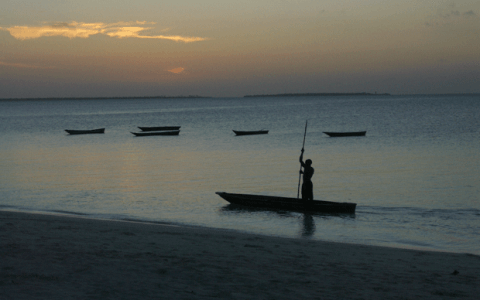
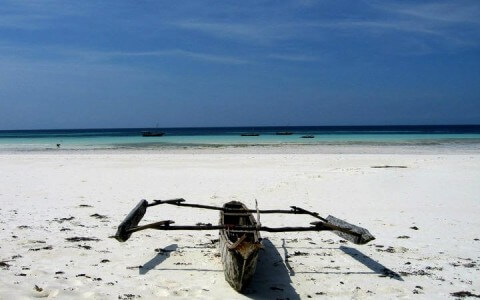
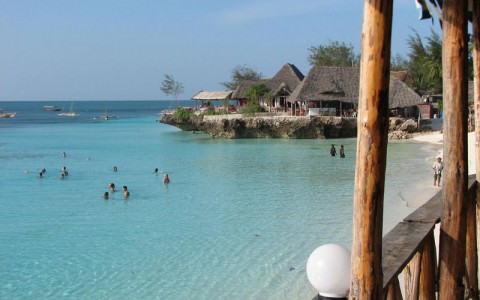




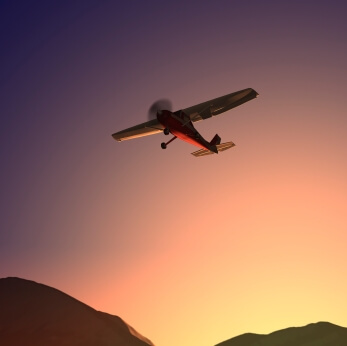
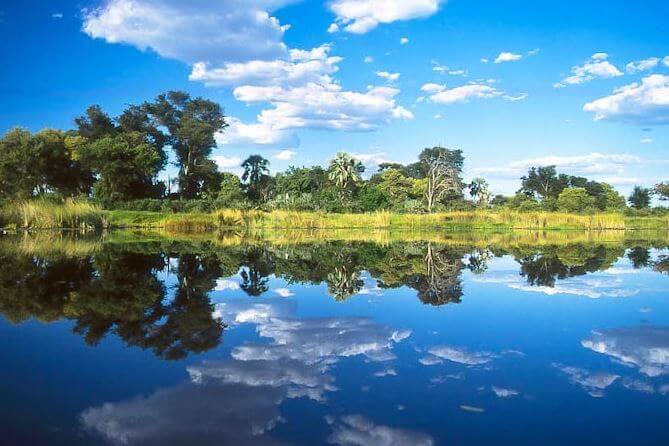



0 Comments